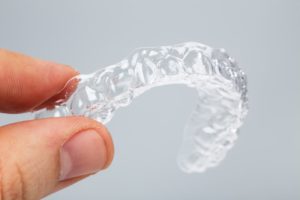Not Sure If Invisalign is Right for You? Read This!
December 12, 2018
 Invisalign has become incredibly advanced over the years, making it easier for more people to take advantage of orthodontics without the worry of metal brackets and wires. They allow for more convenience, especially for those trying to maintain a professional appearance for their job. However, Invisalign is not necessarily for all patients trying to shift teeth. That’s why it’s so important to schedule a consultation first so the dentist can examine your dental issues.
Invisalign has become incredibly advanced over the years, making it easier for more people to take advantage of orthodontics without the worry of metal brackets and wires. They allow for more convenience, especially for those trying to maintain a professional appearance for their job. However, Invisalign is not necessarily for all patients trying to shift teeth. That’s why it’s so important to schedule a consultation first so the dentist can examine your dental issues.
If you’re not sure if your case is best suited for Invisalign or traditional braces, you’ll want to keep reading.
What Can Invisalign Solve?
The most common issues Invisalign can treat is gapped teeth, particularly gaps in between front teeth. They can push crooked or rotated teeth into a straighter position, typically in less time than traditional braces. Additionally, Invisalign can reduce issues with the way the bite comes together. That means overbites, underbites, crossbites and open bites, often referred to as malocclusions, can be treated.
If your teeth are crowded, it can increase the risk of neighboring teeth becoming worn down more quickly over time. As you eat food, the force associated with chewing is unevenly distributed throughout the mouth, therefore resulting in a higher risk of teeth grinding.
While Invisalign is capable of solving these issues, it’s largely saved for individuals who only have minor to moderate levels of crowding, misalignment, gaps or malocclusions.
When are Traditional Braces a Better Solution?
If the dentist determines that you have more significant issues with your teeth, traditional braces may be needed to address them. If you have severe misalignment or many areas of gapped teeth, braces are a better option. The same applies for complex malocclusions, which require very close examination and multiple follow-up appointments to maintain.
One of the most common issues Invisalign has trouble with solving is crowding or misalignment in back teeth. Invisalign cannot address molars in the most effective way possible, so dentists will encourage braces if someone is trying to target these teeth specifically.
Who Should Pursue Invisalign?
Dental issues aside, Invisalign requires people to stick to a strict regimen of wearing their aligners on a daily basis. If you only have minor to moderate levels of misalignment or malocclusions, then it’s likely that you’ll be eligible to use Invisalign. However, if you are not the type of person to stay committed to wearing the aligners for at least 20 to 22 hours per day, braces may be a better alternative. They are a fixed orthodontic device, so you don’t have to worry about whether or not your treatment is working to shift teeth.
Of course, those who care more about their appearance should have extra incentive to stick to wearing their aligners for the entirety of treatment. The longer you stick to wearing aligners, the sooner your treatment will finish and the more effective your results will be.
Invisalign truly offers an alternative for orthodontic care. To speak with a dentist in Vintage Park directly, schedule an appointment and determine your eligibility!
About the Author
Dr. Darrick Castleberry is an expert in cosmetic dentistry. Thanks to his skills and additional training at the Las Vegas Institute for Advanced Dental Studies, he’s fully capable of performing a wide variety of dental treatments, including Invisalign. To learn more about his practice, you can contact him through his website.
No Comments »
No comments yet.
RSS feed for comments on this post.
